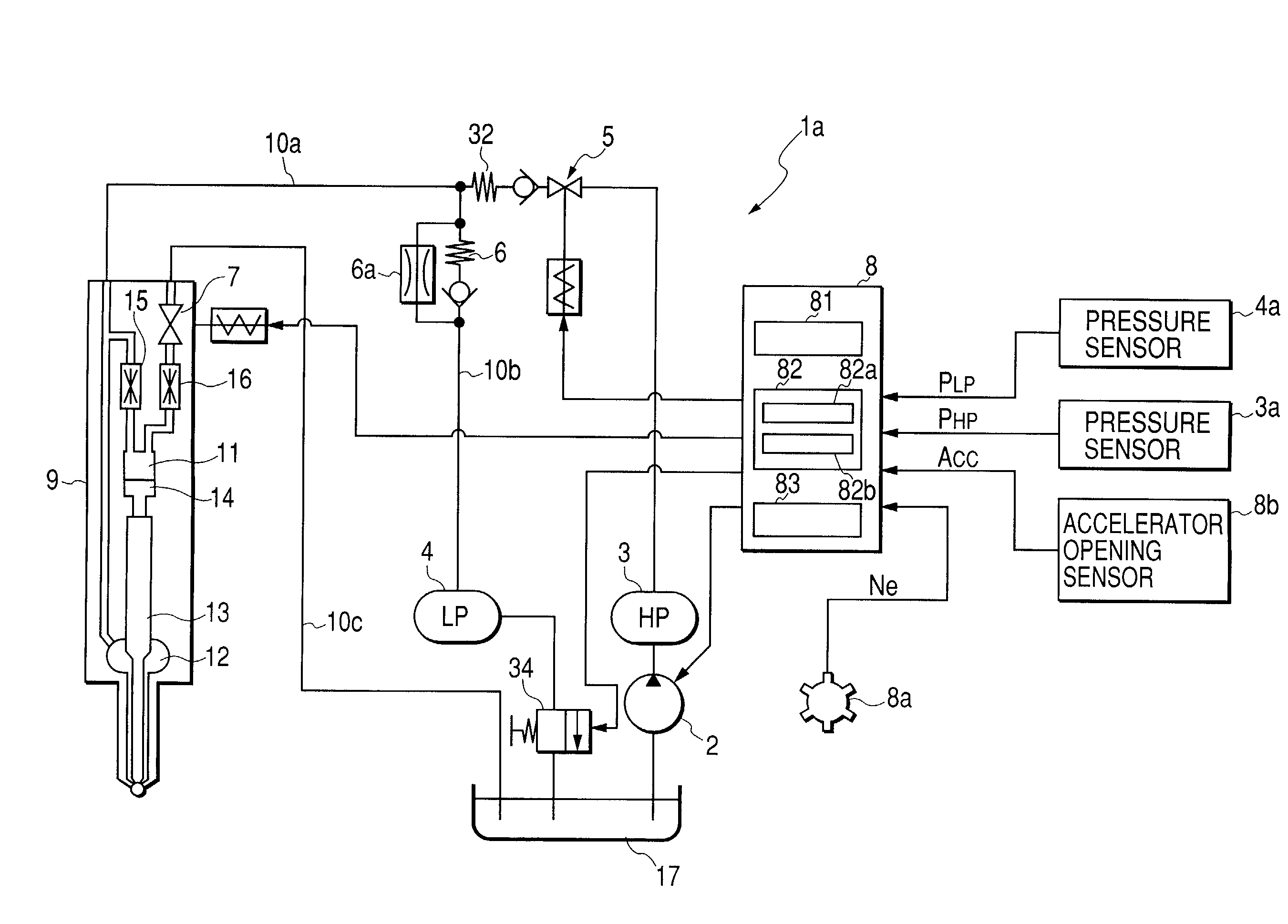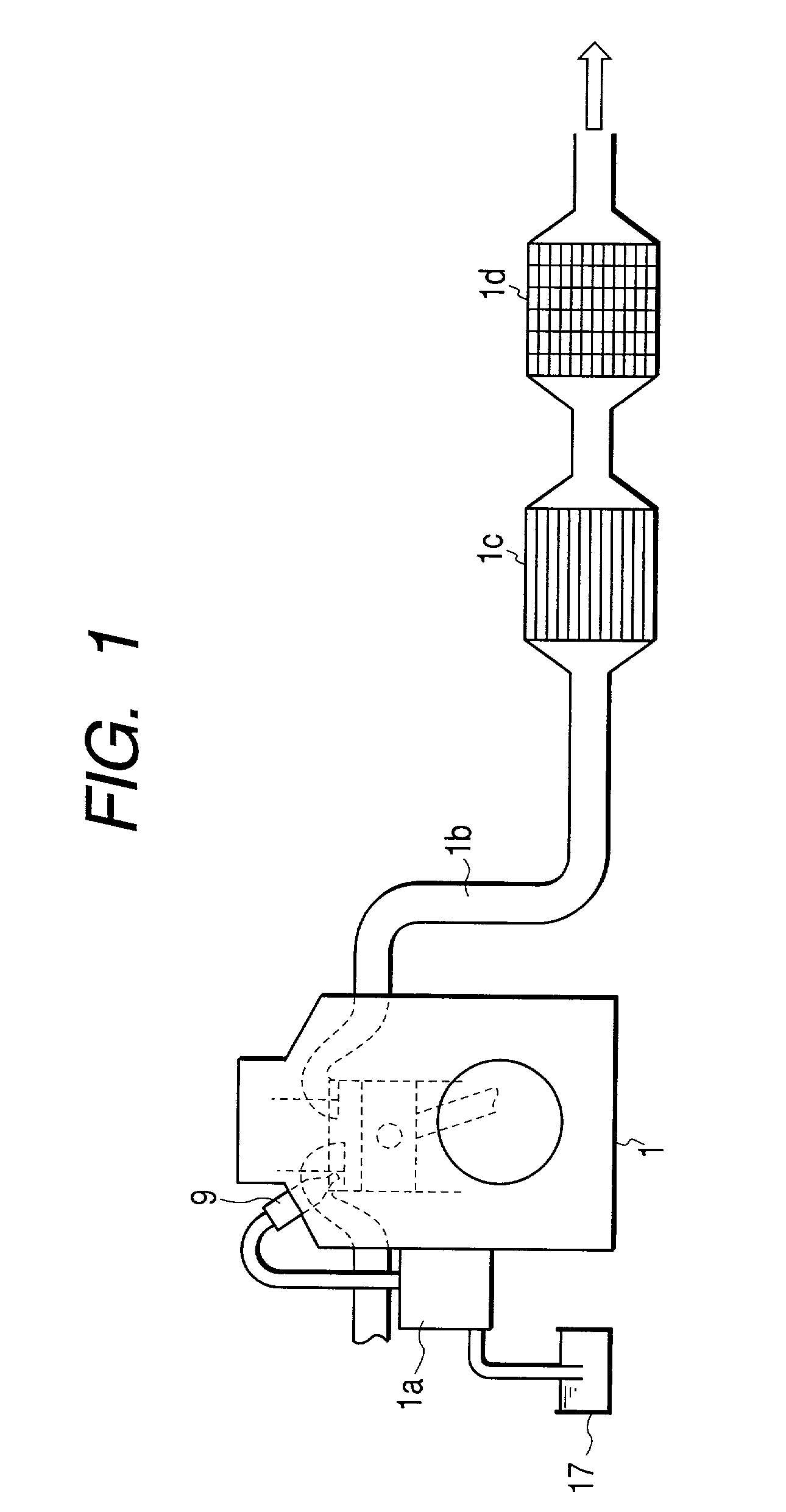Accumulator type fuel injection apparatus
a fuel injection apparatus and accumulation technology, applied in the direction of fuel injecting pumps, machines/engines, electric control, etc., can solve the problems of increased cost, increased fuel pressure, increased oil dilution, etc., and achieve the effect of minimizing the fuel pressur
- Summary
- Abstract
- Description
- Claims
- Application Information
AI Technical Summary
Benefits of technology
Problems solved by technology
Method used
Image
Examples
first embodiment
[0075] To begin with, a first embodiment will be discussed.
[0076] FIG. 4 is a flowchart to show a control routine of post injection control according to the first embodiment. The control routine will be discussed with reference to the flowchart.
[0077] At step S10, whether or not raising the exhaust temperature is required is determined based on whether or not the PM deposition amount exceeds a predetermined value.
[0078] The reason why whether or not raising the exhaust temperature is required is determined based on whether or not the PM deposition amount becomes greater than the predetermined value is that when the exhaust system temperature is low and the continuous regeneration DPF including the DPF 1d and the oxidation catalyst 1c cannot serve the continuous regeneration function, the PM deposition amount increases and as the PM deposition amount is monitored, the exhaust system temperature being low can be easily detected. In case of the exhaust temperature rising, PM is burnt a...
second embodiment
[0100] Next, a second embodiment will be discussed.
[0101] FIG. 9 is a flowchart to show a control routine of post injection control according to the second embodiment. The control routine will be discussed with reference to the flowchart.
[0102] At step S30, whether or not raising the exhaust temperature is required is determined based on whether or not the PM deposition amount exceeds a predetermined value as at step S10 in FIG. 4.
[0103] At step S32, steps S12 to S28 in FIG. 4 in the first embodiment are executed and the injector 9 is driven at a similar injection timing for performing post injection.
[0104] At step S34, a timer is reset (t=o) at the same time as the post injection is started, and at step S36, whether or not the count time t of the timer reaches the injection time period tpost is determined. If the determination result is false (NO), a wait is made for the count time t to reach the injection time period tpost. On the other hand, if the determination result is true (Y...
PUM
 Login to View More
Login to View More Abstract
Description
Claims
Application Information
 Login to View More
Login to View More - R&D
- Intellectual Property
- Life Sciences
- Materials
- Tech Scout
- Unparalleled Data Quality
- Higher Quality Content
- 60% Fewer Hallucinations
Browse by: Latest US Patents, China's latest patents, Technical Efficacy Thesaurus, Application Domain, Technology Topic, Popular Technical Reports.
© 2025 PatSnap. All rights reserved.Legal|Privacy policy|Modern Slavery Act Transparency Statement|Sitemap|About US| Contact US: help@patsnap.com



